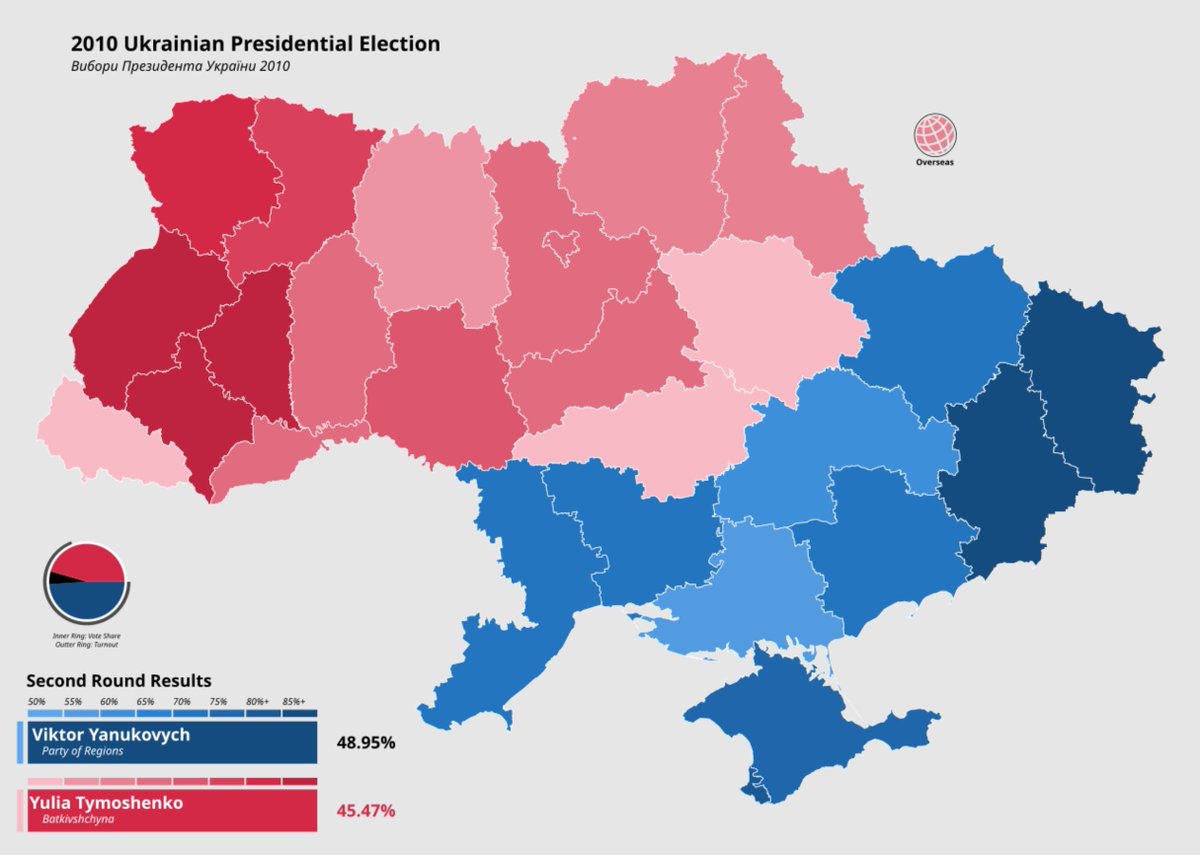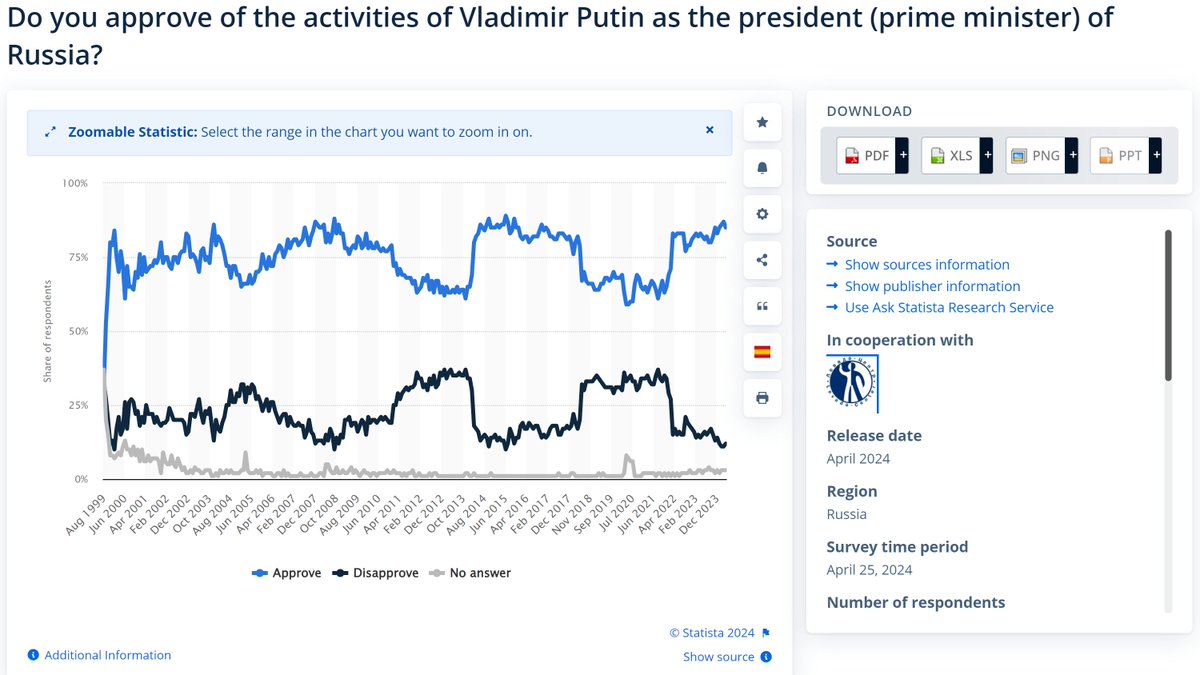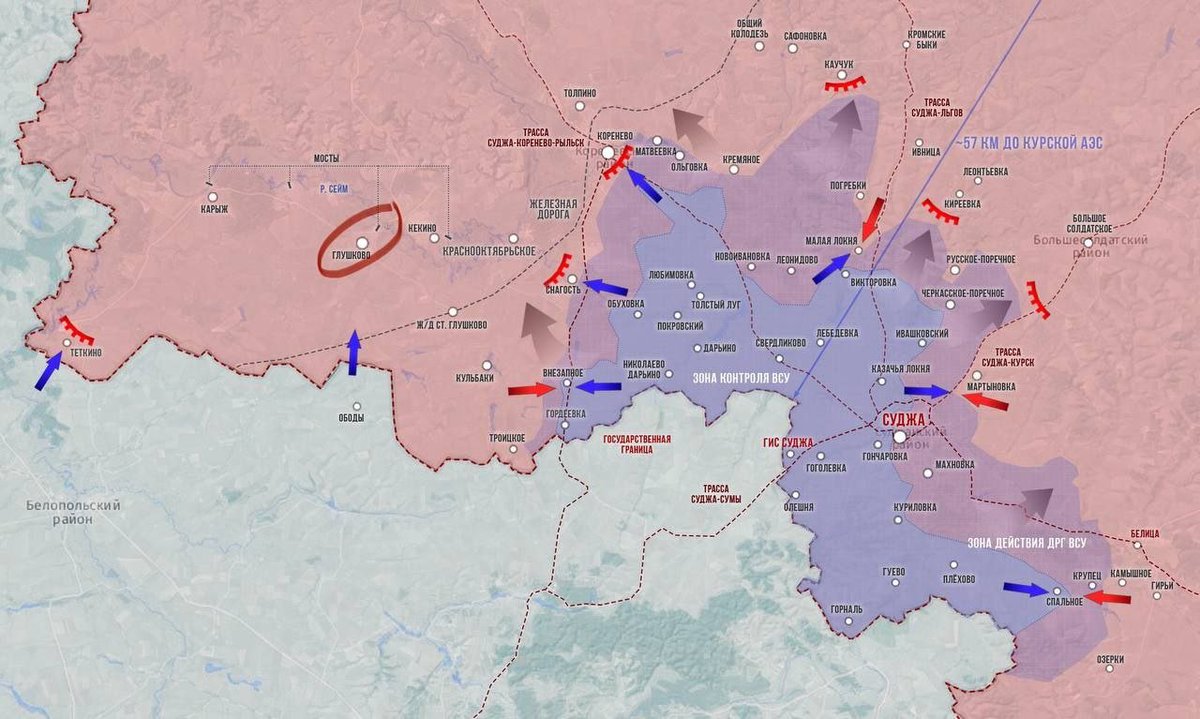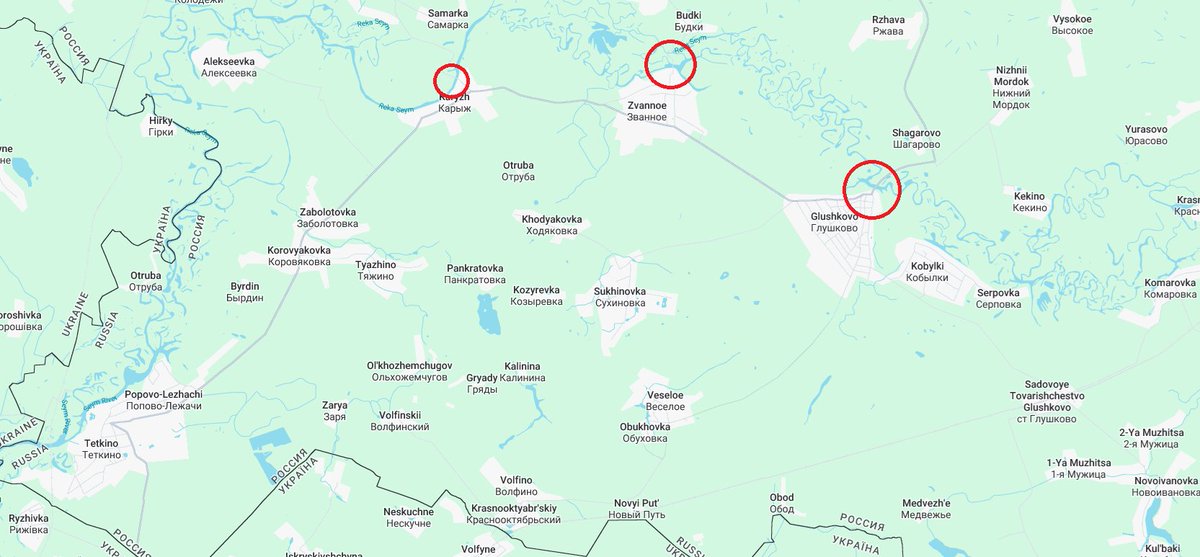Let's talk about Russian small-unit tactics on the offensive. With Russian troops stepping up attacks across the front in Ukraine, I suspect this will be very relevant in the near future.
A video came out recently which I will use to illustrate: t.me/DDGeopolitics/…
A video came out recently which I will use to illustrate: t.me/DDGeopolitics/…
This video was produced by journalists embedded with Russian troops near Spornoe, which I understand are a former LPR unit filled out by Russian reservists. These are ordinary motorized riflemen, not elite troops, equipped with BMP-1s and T-80BVs. 
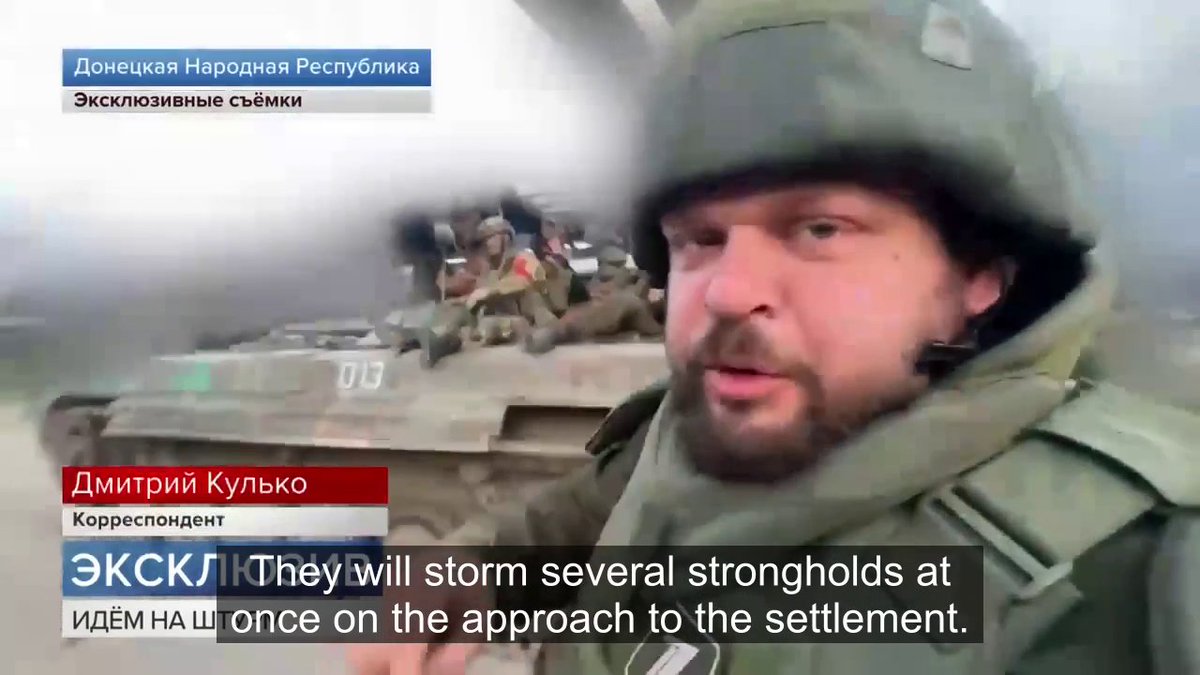
The producers do little to sugarcoat things, although they avoid showing anyone being killed on camera. They freely admit multiple vehicles were hit and at least one Russian tanker was killed during the attack. 

They also have no problem showing moments that might be unflattering for the Russians, including two occasions where reversing vehicles collide with following vehicles.
What's one more dent on a tank?

What's one more dent on a tank?
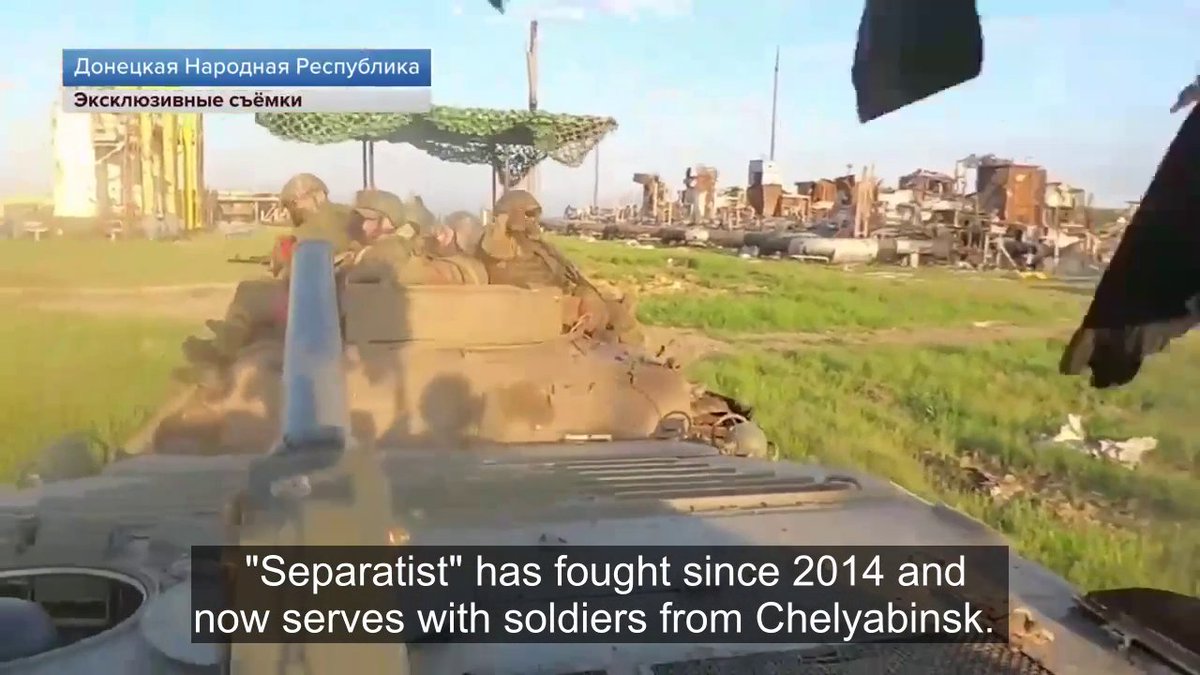
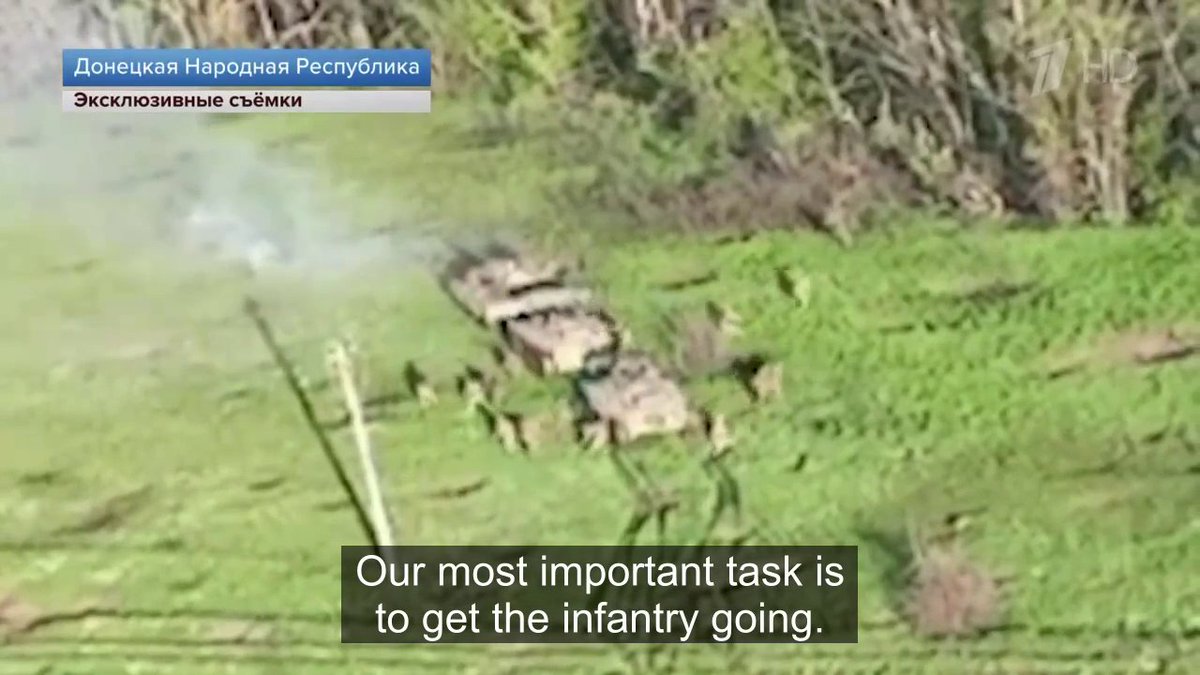
The mission here was to seize a series of Ukrainian positions west of the Russian-held (but very much front-line) gas compressor station at Spornoye. I've marked them on the map as Strongpoints 1, 2 and 3. 


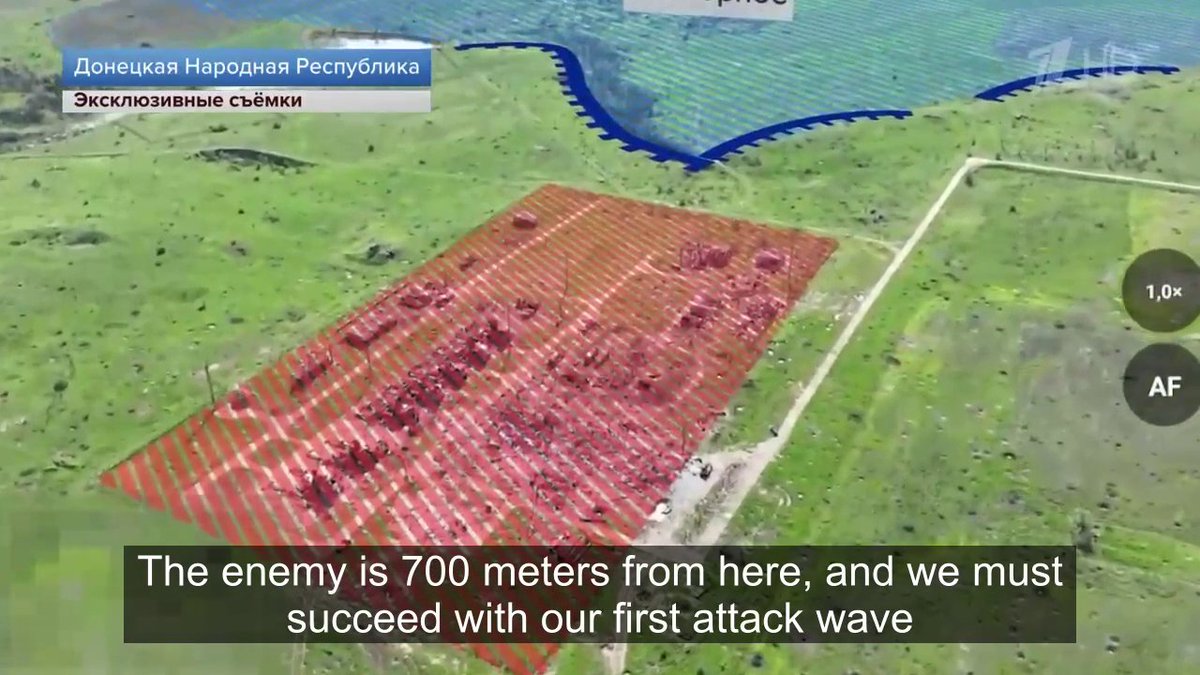
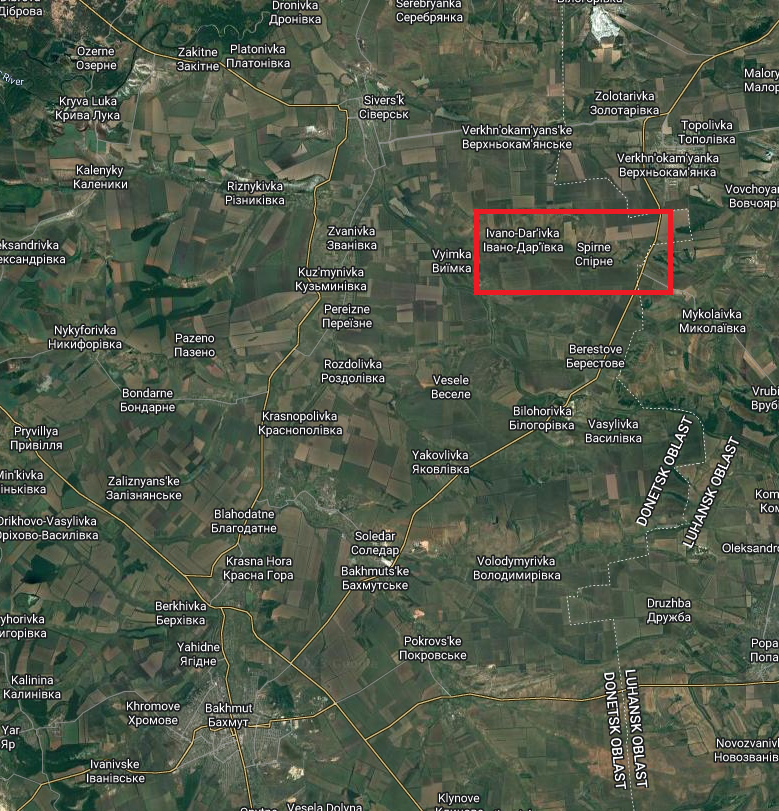
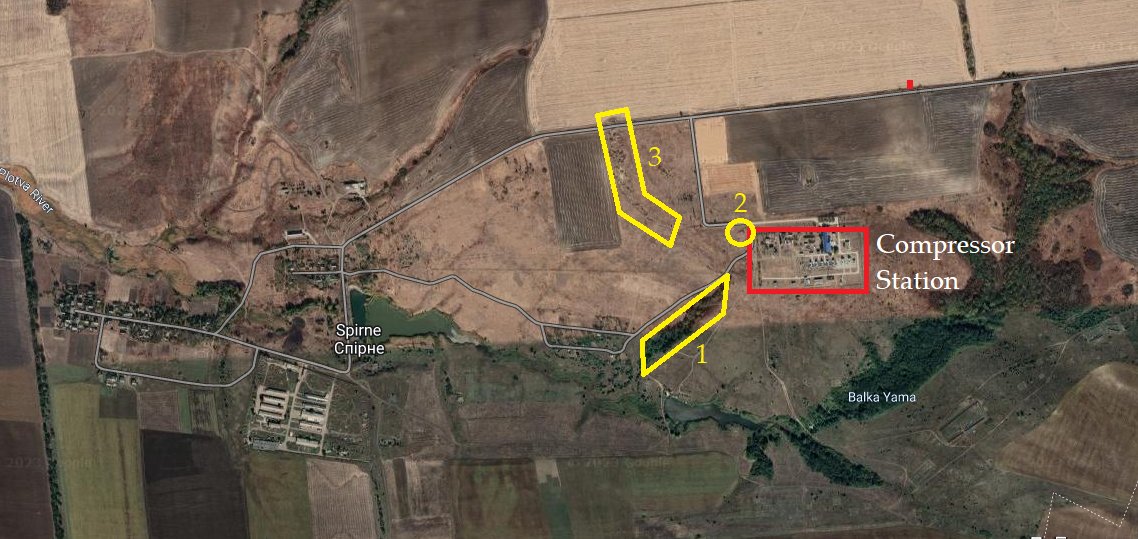
The Russians attacked with a rather small company, apparently some 50 men in three platoons with one tank and two personnel carriers with infantry each. There seems to have been roughly the same number of Ukrainian defenders with at least one tank in support. 
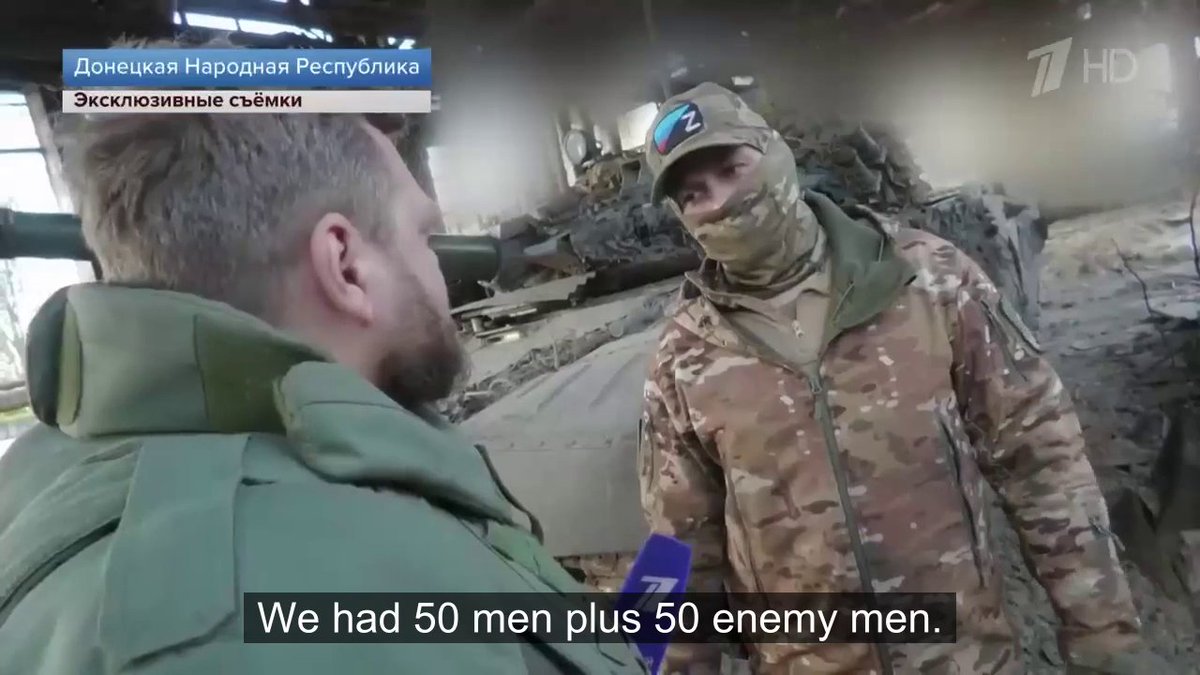
Russian troops in the area had made a habit of operating late in the day and at night rather than in the morning, and surprised the defenders by attacking at dawn. 

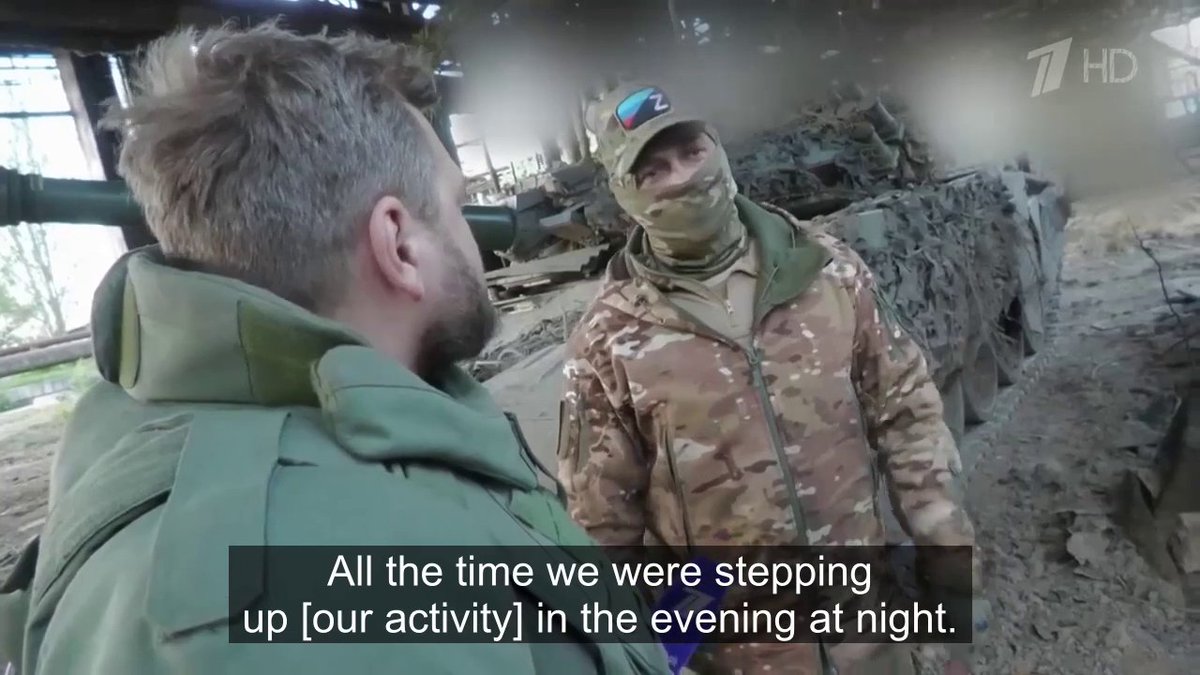

The Russians attacked Strongpoint 1 first. It appears they moved infantry into the compressor station under darkness and launched the initial attack on foot, securing a foothold on the north side after suppressing the defenders.
Armor moved up in support after the first attack.


Armor moved up in support after the first attack.

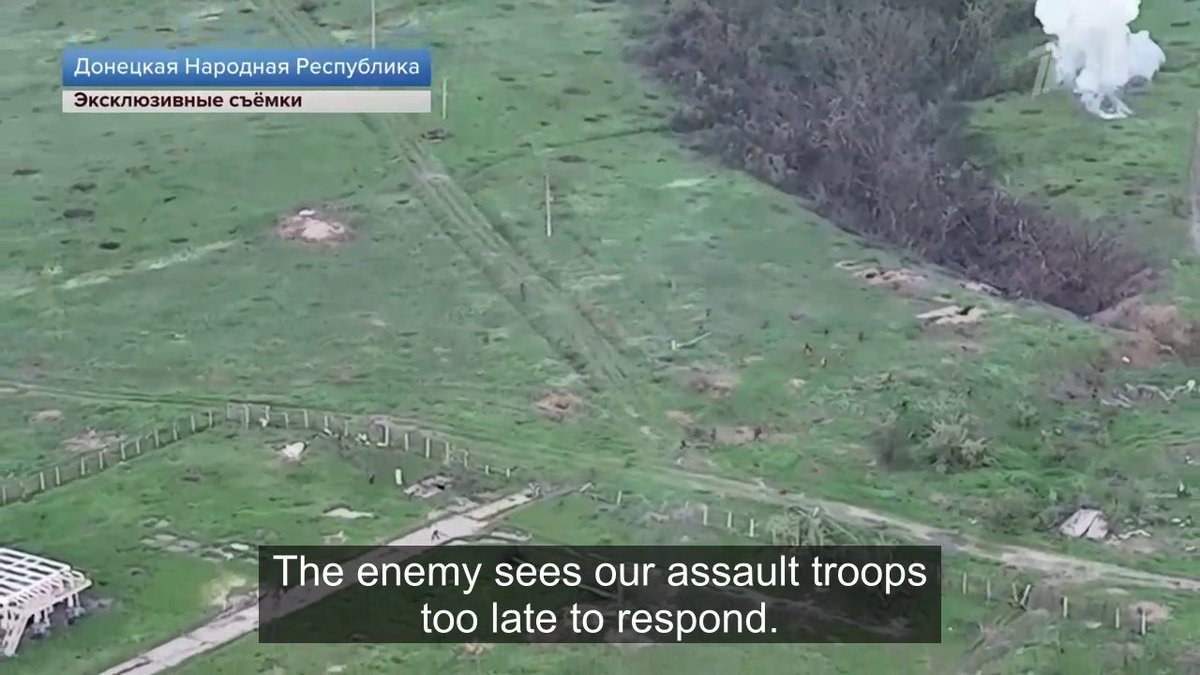
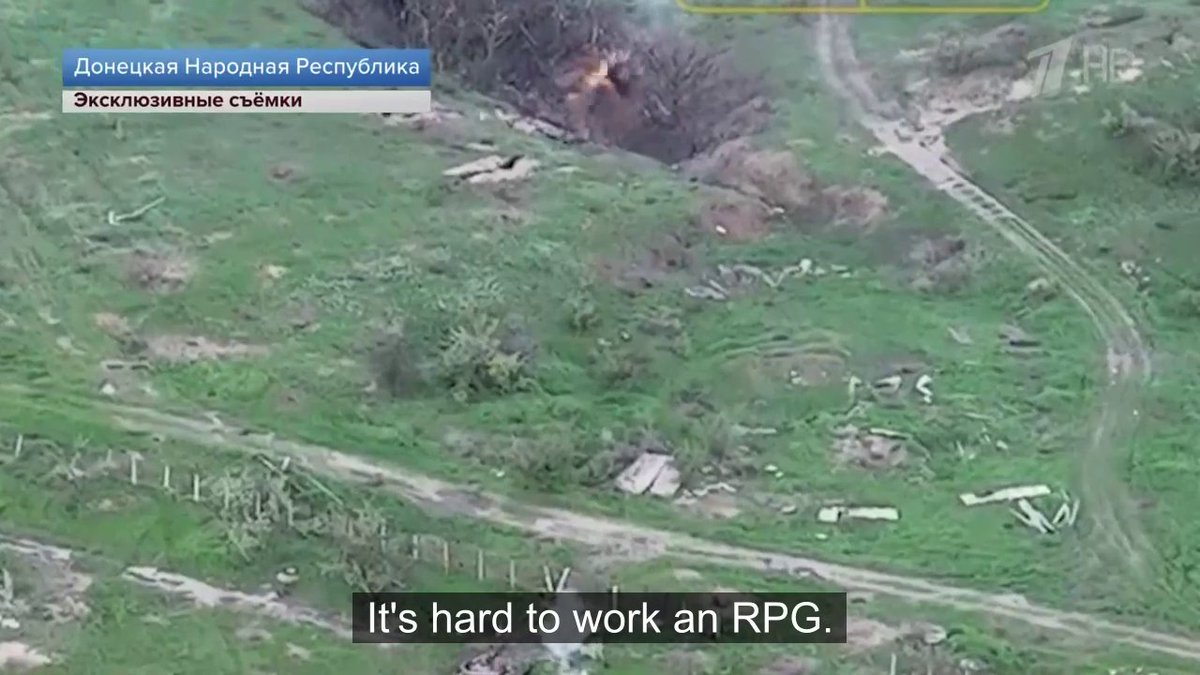
The infantry broke into two groups, one clearing the trenches while the other covered them against counterattacks coming from outside the trench system.
This was all done after the Ukrainians called down indirect fire on their own positions.


This was all done after the Ukrainians called down indirect fire on their own positions.
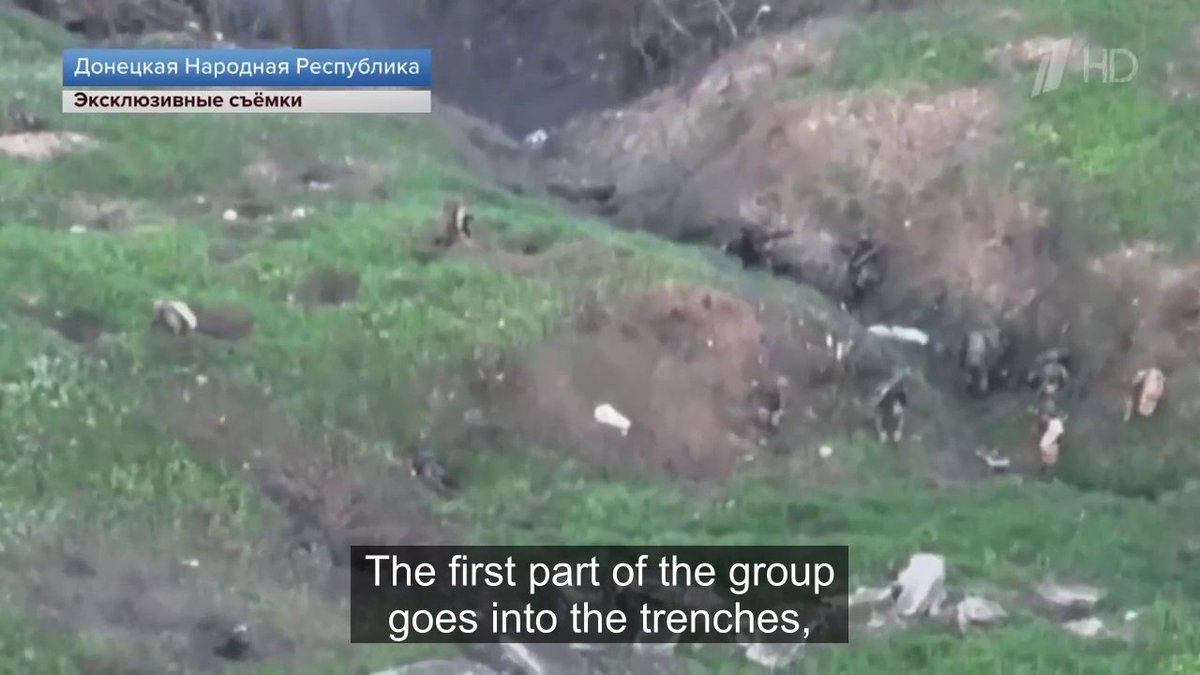


After the initial wave secured the north side of Strongpoint 1 a second platoon attacked to clear the south half.
This platoon moved up mounted on BMPs and led by a tank, avoiding Ukrainian mortar fire.


This platoon moved up mounted on BMPs and led by a tank, avoiding Ukrainian mortar fire.
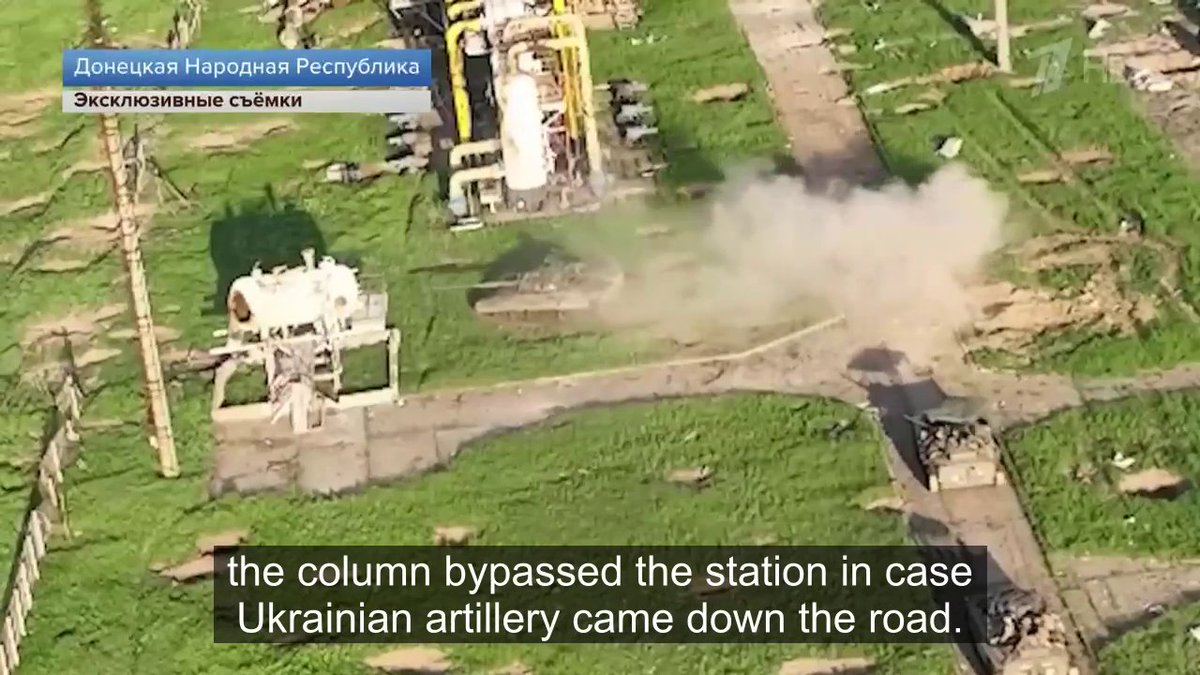
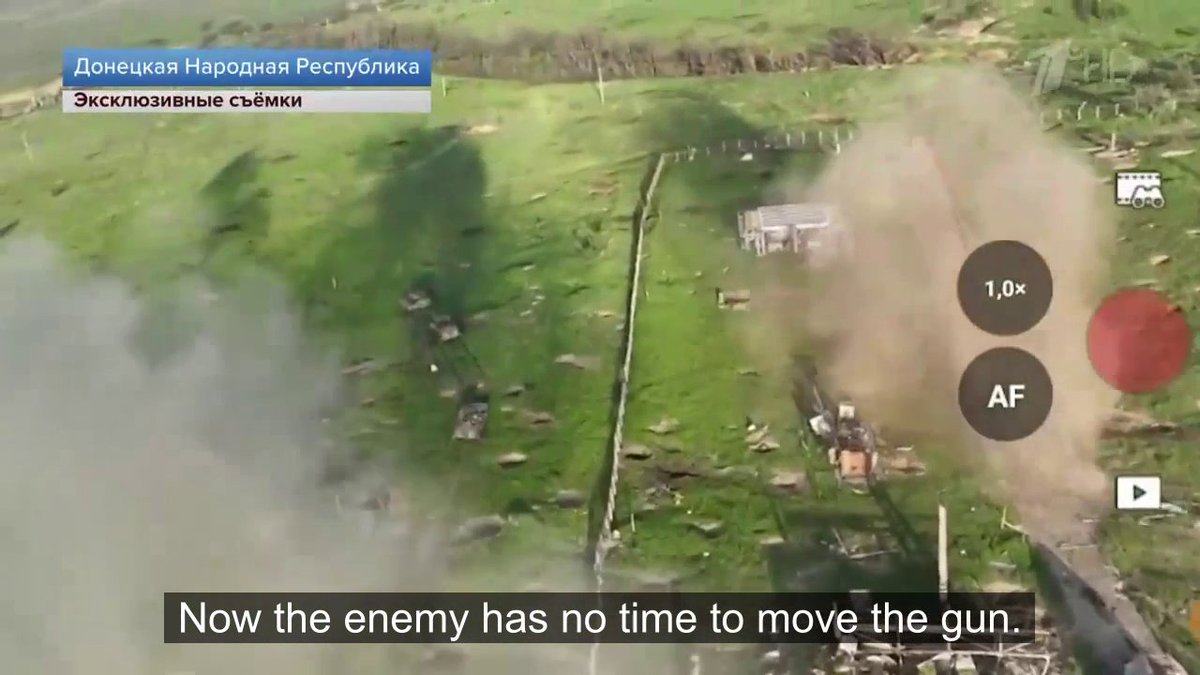

The tank pushed into position to fire directly into the Ukrainian-held ravine while the infantry dismounted, initially using a nearby ditch for cover. 





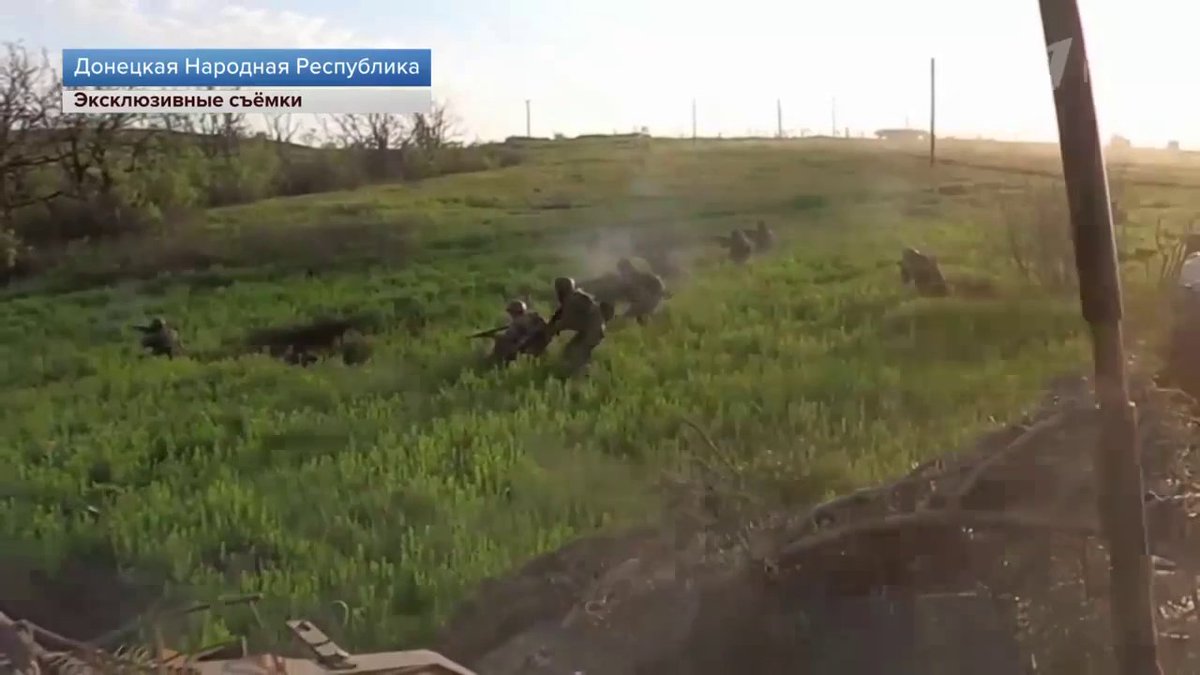
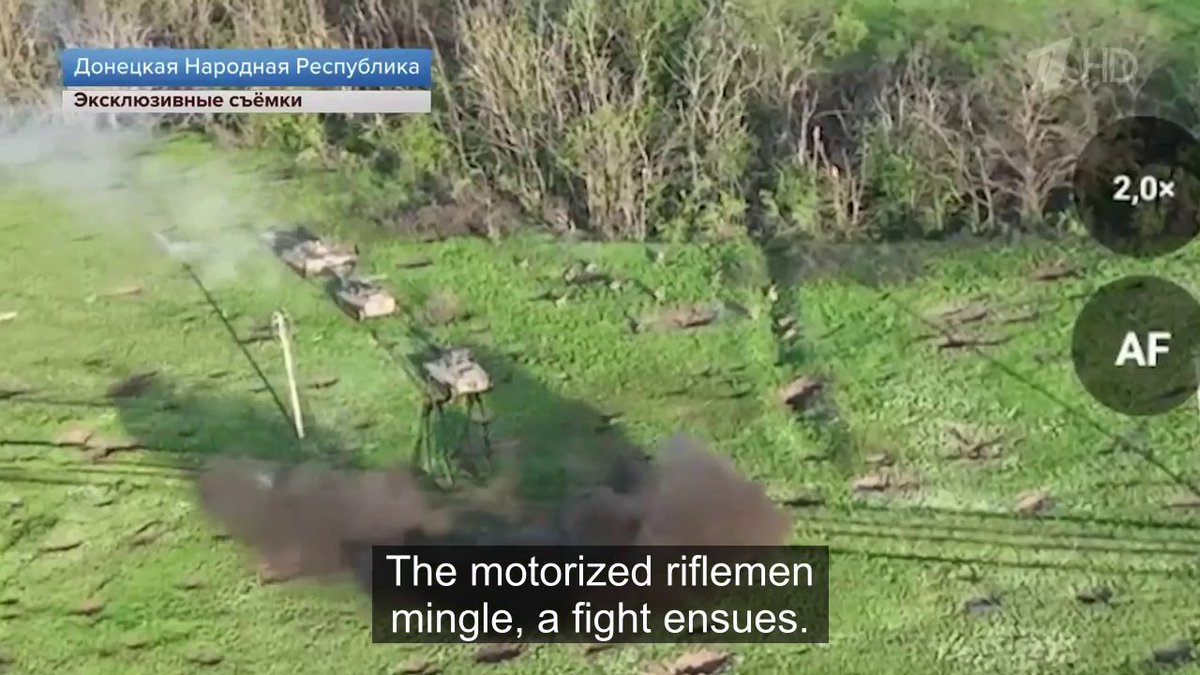
The infantry directed the tank onto remaining pockets of resistance as they assaulted through the position.
With the strongpoint secure and the infantry established in place, the armored vehicles - which attract enemy fire - withdrew.

With the strongpoint secure and the infantry established in place, the armored vehicles - which attract enemy fire - withdrew.
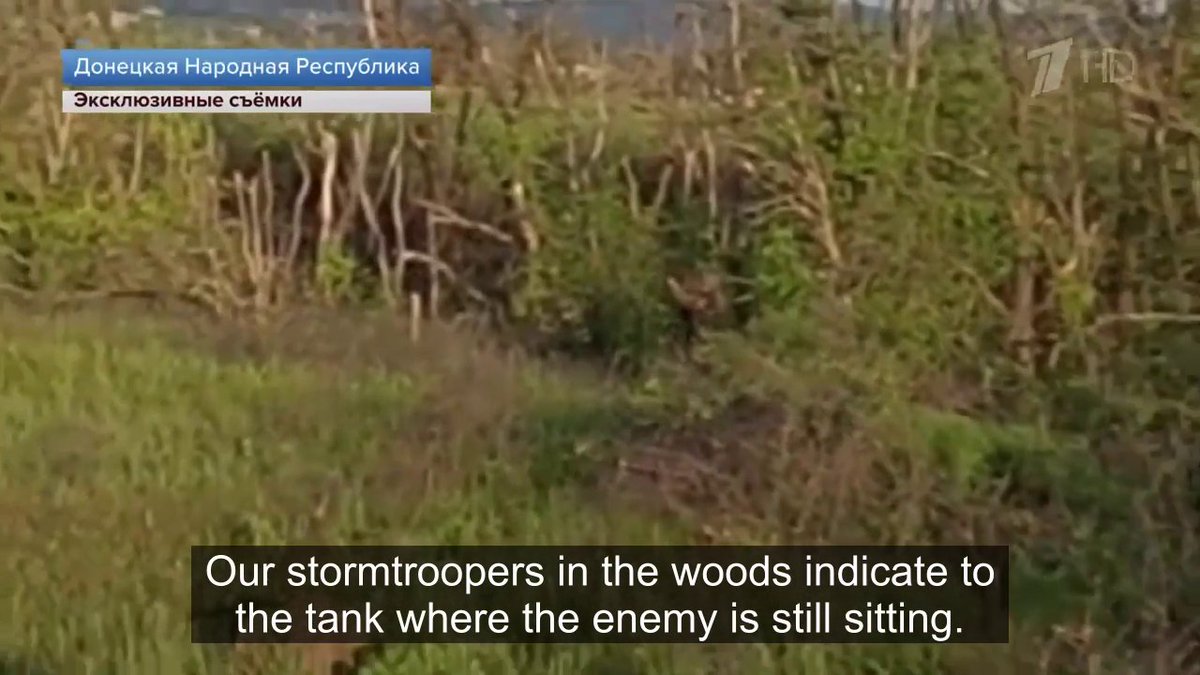

Another platoon was engaged as they moved up to attack Strongpoint 3, with at least one tank hit and disabled with the gunner killed.
A second tank was also hit, with the crew concussed, but pressed on to continue the attack.



A second tank was also hit, with the crew concussed, but pressed on to continue the attack.


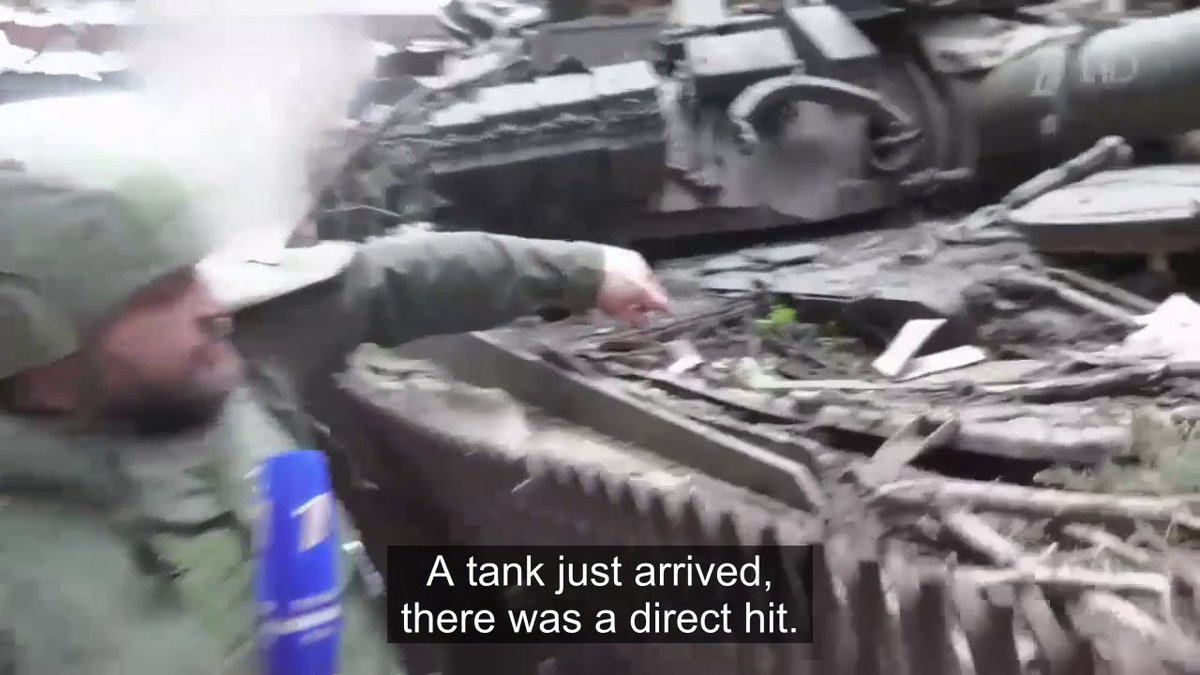

To get to Strongpoint 3 they had to deal with Strongpoint 2, a bunker built into a collapsed building on the edge of the compressor station. The damaged tank approached and demolished it at point-blank range.
Russian infantry occupied the ruin shortly after.


Russian infantry occupied the ruin shortly after.
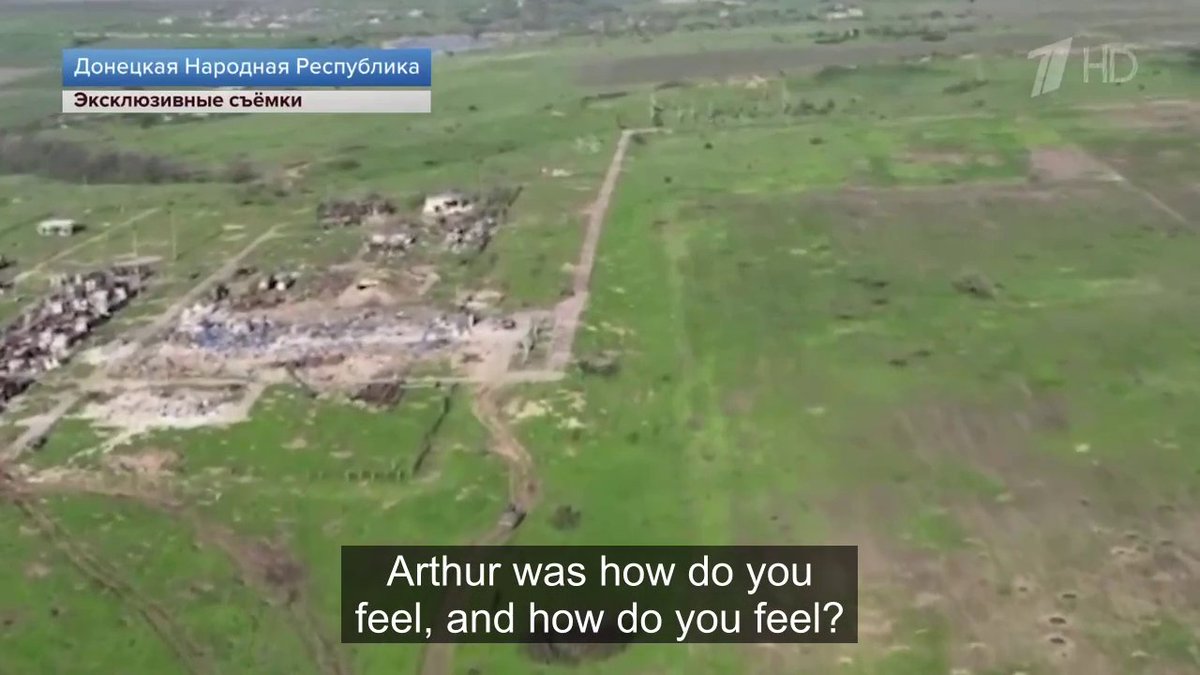
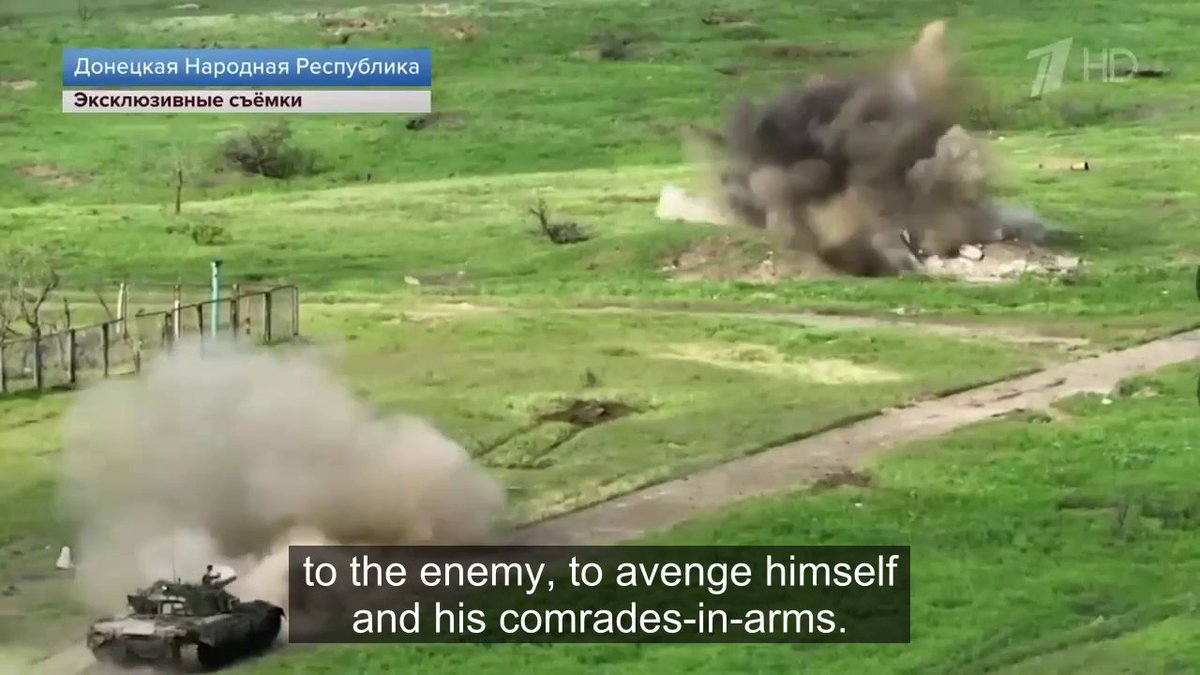
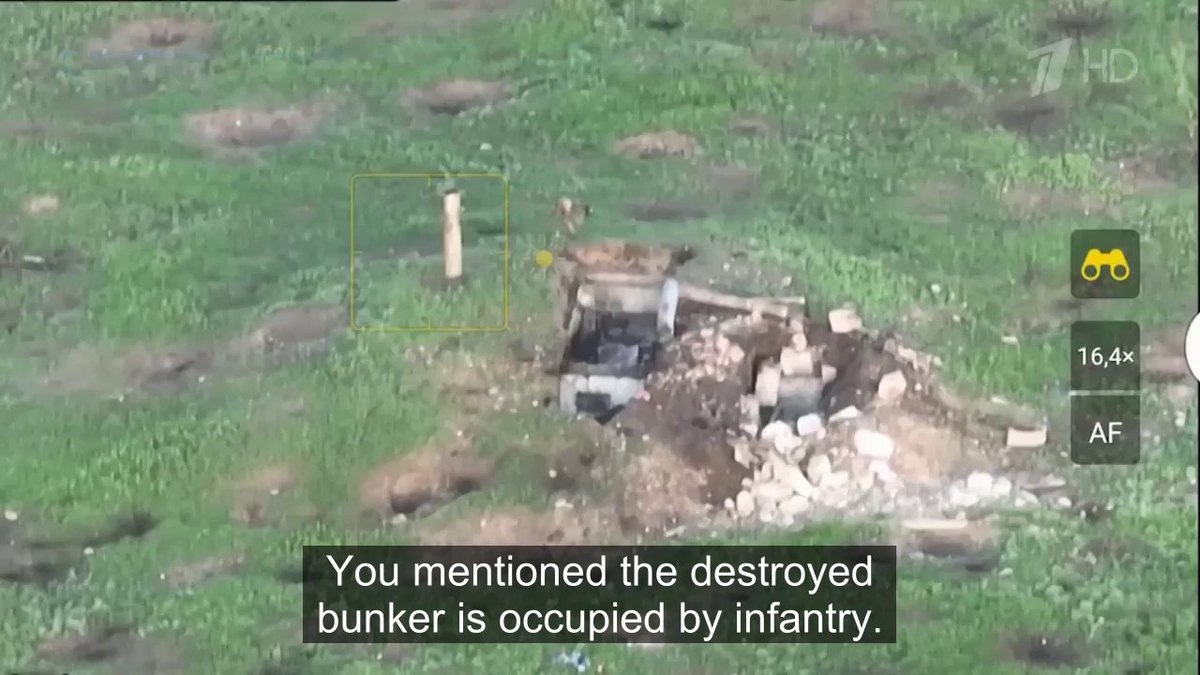
That platoon then pushed on Strongpoint 3, suppressing the trenches with fire from tanks and BMPs and reducing the defenders to holding their rifles overhead to fire back. 

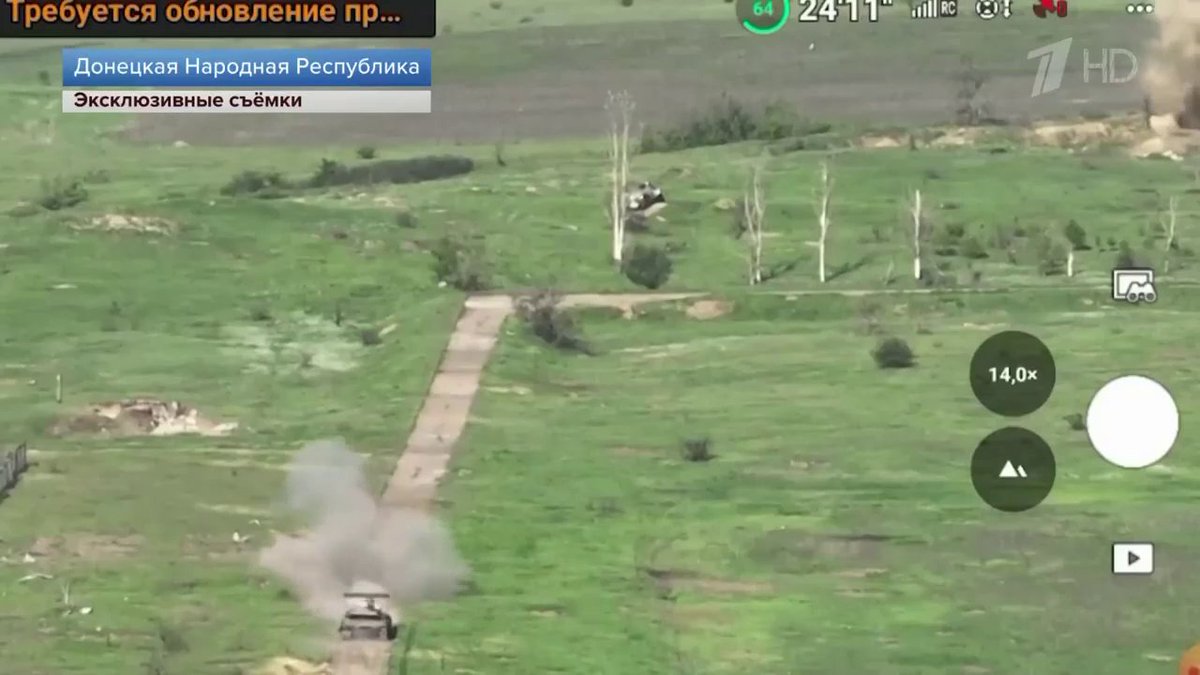

Two Russian BMPs approached the south side of Strongpoint 3 and dismounted infantry practically on top of the trench, who immediately assaulted. The BMPs withdrew quickly after delivering their troops.
An abandoned Ukrainian tank is visible just past the BMPs.

An abandoned Ukrainian tank is visible just past the BMPs.
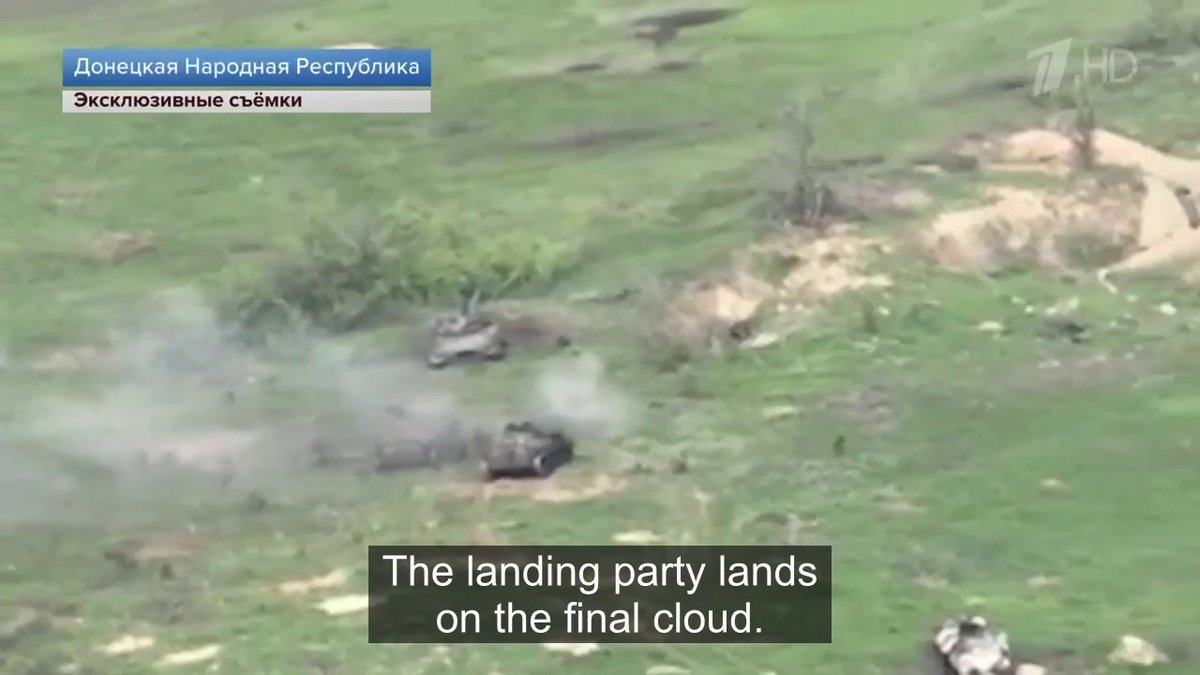
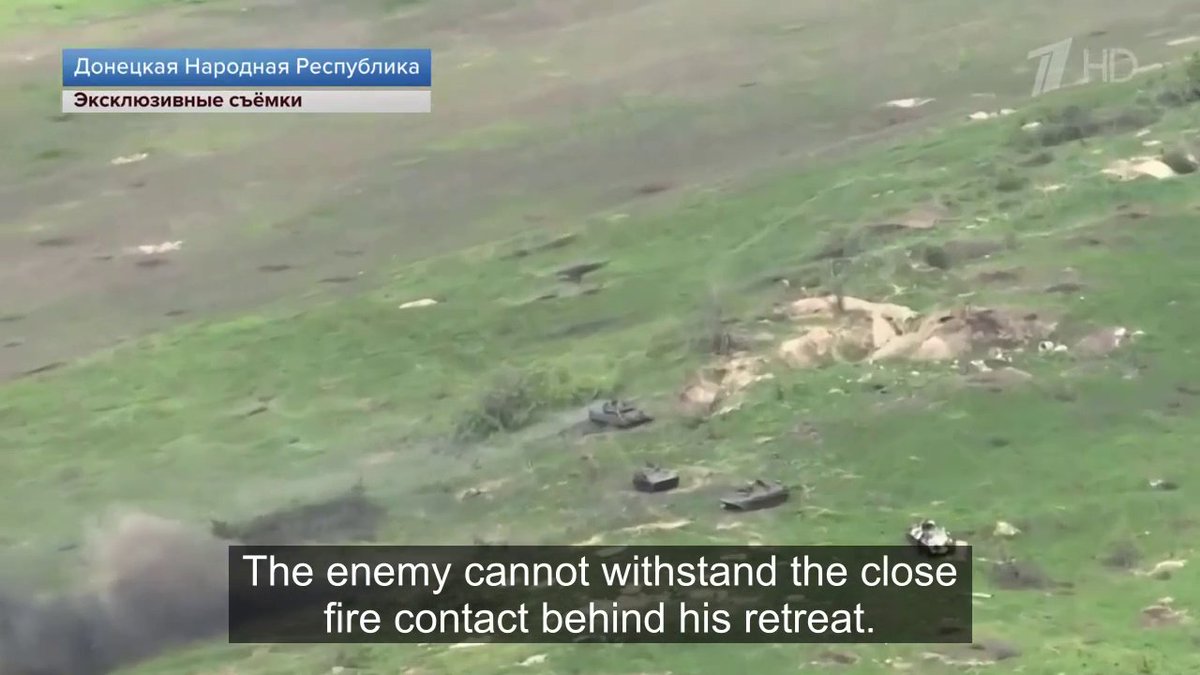
Ukrainian troops fled the strongpoint across open ground as the assault began. The Russians called in artillery to harass them and consolidated on the newly-seized position. 


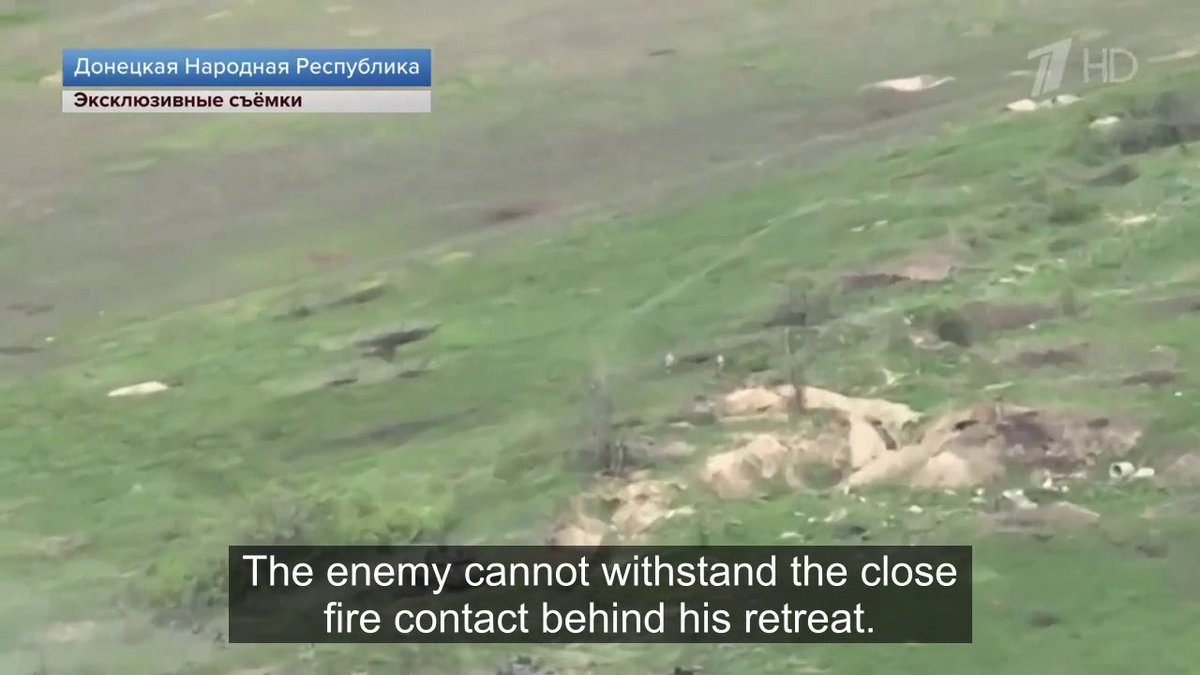
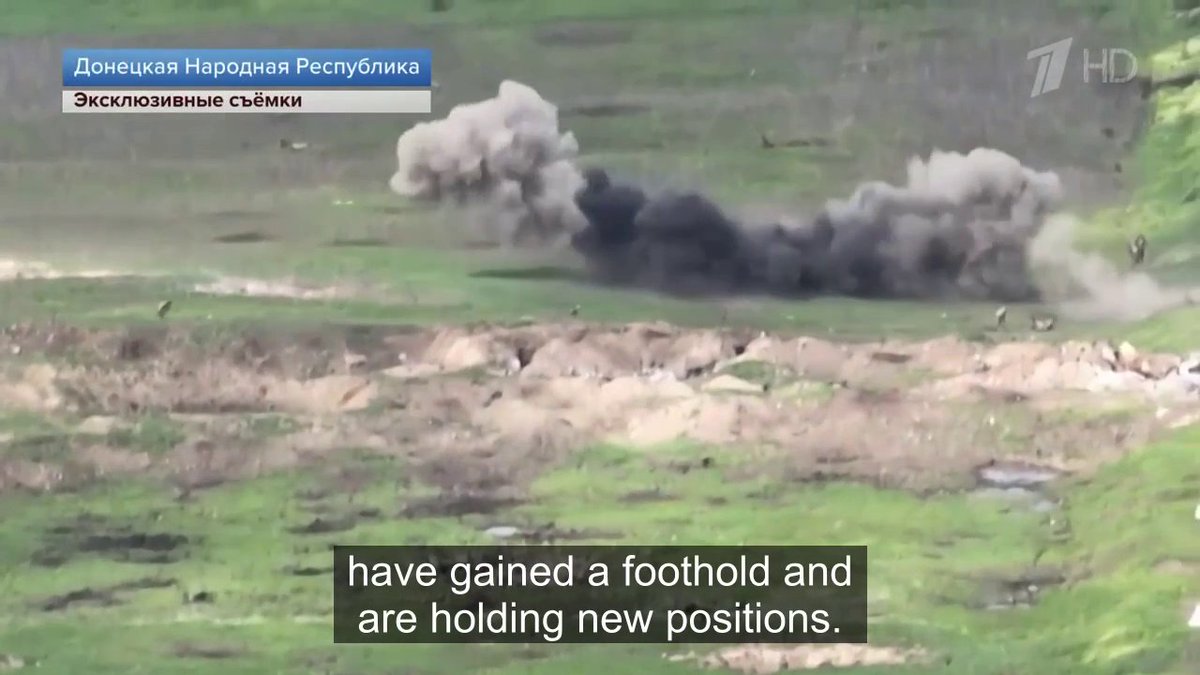
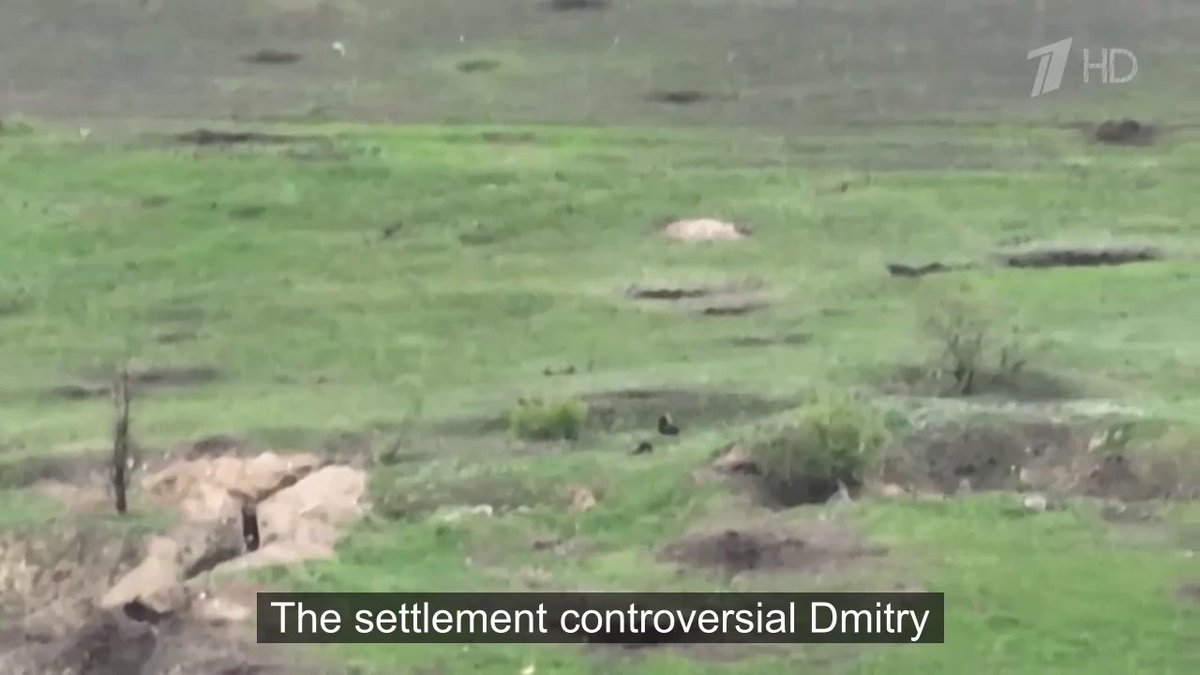
This was hardly some grand, sweeping offensive - it was a limited attack by a single company to take three strongpoints and move the front line 200m forwards. You can, however, see the intricacy of even this small fight.
The company made one dismounted attack with infantry moving up on foot and two mounted attacks with infantry dismounting close to enemy positions.
Throughout, the infantry cooperated closely with their armored support to suppress the enemy so they could move into close combat.
Throughout, the infantry cooperated closely with their armored support to suppress the enemy so they could move into close combat.
On the other hand, the tanks led the way across open terrain and blasted their way past exposed positions like Strongpoint 2.
BMP crews seemed quite aware of their vehicles' thin skin and withdrew quickly after dropping off infantry.
BMP crews seemed quite aware of their vehicles' thin skin and withdrew quickly after dropping off infantry.
The attack was made under persistent Ukrainian artillery fire and against a well-equipped enemy who abandoned at least one tank on the battlefield. The Russians obviously suffered several casualties and at least one tanker KIA.
This is very standard combined arms stuff and hews closely to Soviet doctrine, with combined-arms platoons, tanks leading the way, and infantry dismounting almost on top of enemy positions to immediately assault. The main innovation here is the observing drone.
It's also a very far cry from the nonsensical propaganda we commonly see about Russian operations in Ukraine. There were no "meat waves" here, nor any crushing barrage of artillery fire. Just a dawn attack with Soviet-style combined arms from a modest motor rifle unit.
Addendum: According to @tretter50001 , the Russians also lost three infantrymen KIA.
https://twitter.com/tretter50001/status/1658677186688086018?s=20
• • •
Missing some Tweet in this thread? You can try to
force a refresh













